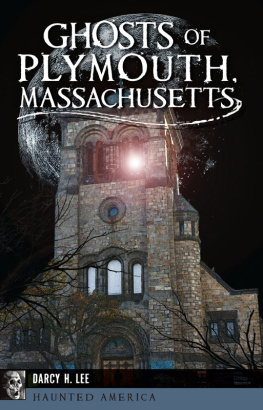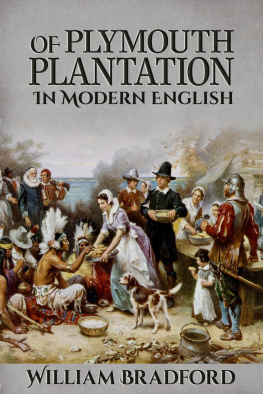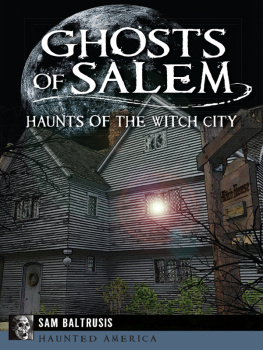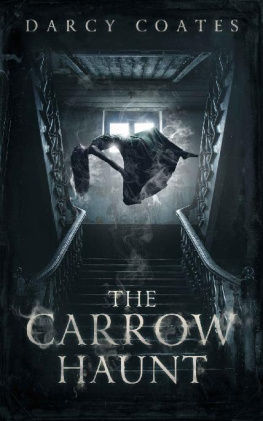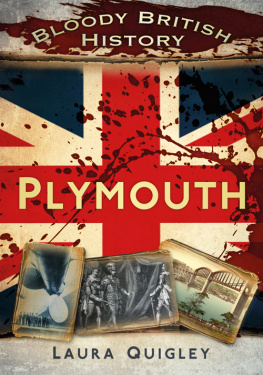

Published by Haunted America
A Division of The History Press
Charleston, SC
www.historypress.net
Copyright 2017 by Darcy H. Lee
All rights reserved
Front cover: First Parish Meetinghouse, Plymouth. Patrice Hatcher Photography.
First published 2017
e-book edition 2017
ISBN 978.1.43966.265.6
Library of Congress Control Number: 2017940955
print edition ISBN 978.1.62585.878.8
Notice: The information in this book is true and complete to the best of our knowledge. It is offered without guarantee on the part of the author or The History Press. The author and The History Press disclaim all liability in connection with the use of this book.
All rights reserved. No part of this book may be reproduced or transmitted in any form whatsoever without prior written permission from the publisher except in the case of brief quotations embodied in critical articles and reviews.
This book is dedicated to my mother and late father, Marilyn and Dan Lee.
Thank you for your continued love, guidance and support.
ACKNOWLEDGEMENTS
I was a resident of Plymouth for nearly twelve years and considered myself lucky to land in a place of history and beauty. I always wondered why no one had written a ghost-story book solely about and wholly dedicated to hauntings and horrors in Plymouth. So, here it is, just in time for the international commemoration of the 400th anniversary of the landing of the Pilgrims in 2020.
No author is alone in his or her quest to put together a book that people want to read. I would be remiss if I did not mention those who have helped me in my research of haunted happenings in Plymouth and those who have contributed to my goal of writing a historically accurate account of Plymouths history as it relates to its folklore and tales.
My sincerest heartfelt thanks are extended to Patrice Hatcher, psychic, photographer and interior designer; Vicki Noel Harrington, owner of Spirit of Plymouth Walking Tours of Americas Hometown; William Rudolph, president of the Plymouth Cordage Museum; Lucille Leary, secretary of the Plymouth Cordage Museum; Elizabeth and James; Mark Bryant, owner of Seasound Recording Studios at the Spire Center for the Performing Arts; Dot McDonough of Seasound Recording Studios; Diane Finn, retired owner and guide of Plymouths Colonial Lantern Tours (now closed); Amy Giammasi of the John Carver Inn and Spa; Robin Ruehrwein, social media commentator and blogger at massholemommy.com; Rob Kluin, director of marketing and communications at Plimoth Plantation; and Paul Cripps, executive director of Destination Plymouth and the Plymouth County Convention and Visitors Bureau.
PREFACE
Plymouth, Massachusetts. Located on the states South Shore and home to fifty-eight thousand people, Plymouth is known worldwide as Americas Hometown, the landing place of the Pilgrims in 1620 and the home of the first Thanksgiving. The mere mention of this seaside community evokes idyllic images of family, tradition and the proud history Americans share.
As a major tourist destination situated between Boston and Cape Cod, Plymouth welcomes more than 1.5 million visitors each year from all over the world, visitors who enjoy the areas waterfront, beaches, pine barrens, museums, historical architecture, quaint downtown, cultural activities, restaurants and so much more.
But it is not the residents of Plymouth, or those who have traveled far and wide to experience the Pilgrim story firsthand, who should cause any concern. There is a population of sorts that remains behind. When the air turns crisp and you hear the unmistakable crunch of leaves behind you on a deserted lane, you turn, and no one is there. The wind comes off the water, and you swear you hear cries of pain and desperation in its howl. You may have heard stories as a child about those who have committed dastardly deeds, some so incredible that they could not possibly be true, you say. Read on.
One word of caution before you do. I remind the reader that some of the sites and locations mentioned in this book are private residences or businesses. Others are historic sites or venues that are open to the public during prescribed days and times. All are treasured parts of Plymouths historic past and rich heritage. When visiting Plymouth and any sites mentioned in this book, please be mindful of laws regarding trespassing on private property and rules and restrictions regarding public land and spaces.
Now, read on.
CURSED PATUXET
Is Plymouth cursed? If you listen to those among us with an intuitive nature, they would suggest that the land holds on to the grief, the despair, the tragedy, the pain, the depravity, the hopelessness and the fear of its earlier generations of inhabitants, from its native people to the Pilgrims and modern-day residents. A place of great tragedy can retain the negativity of its past.
Of course, not all of Plymouths history is marred by misfortune, catastrophe, crime and despondency. Plymouth is a big small town. Generations of families make their home in Plymouth because of the beautiful coastline, the natural environment of the pine barrens, activities and entertainment, proximity to services, good schools and a large, affordable housing stock. Dedicated stewards of the towns history help create cherished memories for visiting tourists from around the world. Simply put, residents enjoy a good quality of life in Plymouth, and visitors enjoy themselves immensely.
Still, there remains an undercurrent of something that is hard to put ones finger on. There is a darkness, a heaviness at times and in places, an impression that the heartbreaks and misfortunes of the past are woven into the fabric that is Plymouth. This begs the question: is Plymouth cursed?
In the early seventeenth century, a plague decimated all of the Patuxet Native American tribe living in what is now Plymouth, leaving Squanto as the sole survivor. Squanto survived because he was not on the continent of North America at the time of the plague. He had been kidnapped into slavery and sent to Europe. In 1619, he was released and returned to Patuxet (Native American for land of the little falls). What remained of his village were the bleached bones of his fellow tribespeople and relatives. Did this plague, a curse perhaps, lay the groundwork for the tortuous first year experienced by the Pilgrims?
In 1620, a community of Separatists from the Church of England departed Plymouth, Devon Harbor, on the Mayflower, after already having had an arduous trip from Leyden, Holland, to Dartmouth, England, and then to Plymouth. Two ships commissioned for the transatlantic voyage, the Mayflower and the Speedwell, were to take the Saints and Strangers to a new England in the Virginia Colony. The Saints (the name the Pilgrims gave themselves) and the Strangers (the name they gave to the other passengers who were not members of their religious community), 102 in all, fully expected to reach the New World in the early fall of 1620. But the Speedwell took on water and forced the two ships back to Dartmouth shortly after their departure in August. It took nearly a month for the group to finally embark on only one ship, the now very crowded Mayflower, from Plymouth. They would be traveling across the Atlantic during the stormiest and most dangerous of months.
The Mayflower nearly met its peril when the fierce storms of the North Atlantic caused a crack in the main beam of the vessel. A giant screw repaired the crack, but now the ship was off course and headed toward Cape Cod. The call Land ho! was not met with jubilation by the Pilgrims. Relief, yes, but not jubilation. What greeted them could have very well been confused with the Sahara Desert. Sand, wind, little vegetation and no fresh water awaited them. Try as they might to reach the passengers destination of the mid-Atlantic, Captain Christopher Jones and his crew attempted to traverse the dangerous shoals of the outer Cape but were forced to turn back.
Next page
